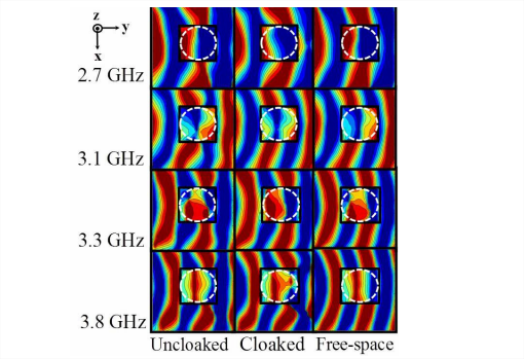The World’s First 3-D, Free-Standing Invisibility Cloak Conceals from All Angles
In microwaves, that is

The search for the perfect invisibility cloak lumbers onward, but that lumbering is starting to pick up speed. We’re hearing more and more these days about metamaterials, the possibilities of time cloaking, and other such future-stuff. And today, from deep in the heart of Texas, we get another tantalizing finding: UT researchers have, for the first time, cloaked a three-dimensional object in free space. That is, no matter the angle of observation, the object was rendered invisible in 3-D.
So that’s pretty huge. What we generally hear about when we hear about invisibility is some new trick with metamaterials that allows for cloaking in two-dimensions by bending light around some tiny object. This means that from a single side, the object is concealed. Take a walk around the object, and it reappears. Less like a cloak, more like an invisibility curtain.
The UT team used a different method, known as plasmonic cloaking, to conceal an 18-centimeter cylinder from every direction. This is true “cloaking,” as the plasmonic material is actually coated onto the object to be concealed. These plasmonic materials work by doing the opposite of what normal materials do: reflecting light. When you see an object, it’s because light is bouncing off of it and striking your eyes, which send that info on to the brain for processing. Plasmonic materials scatter light instead, producing what is essentially transparency from all angles of observation.
Ready for the attached strings? This has only been demonstrated with microwaves. In the visible range, the cylinder is still plenty visible. But the UT Austin team thinks that making this work in the visible spectrum isn’t outside the realm of possibility. And if they can pull that off, you’ll know it because it will be leading the news here. In previous studies the team has shown that its plasmonic coating can cloak any object regardless of shape or symmetry. If they can sort this out in visible light, we may someday be able render just about anything invisible.